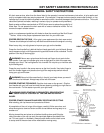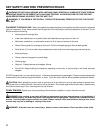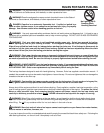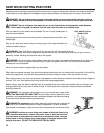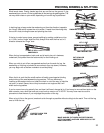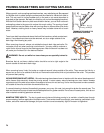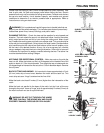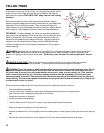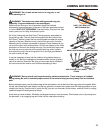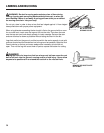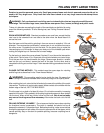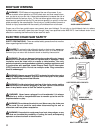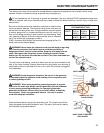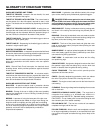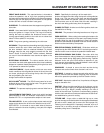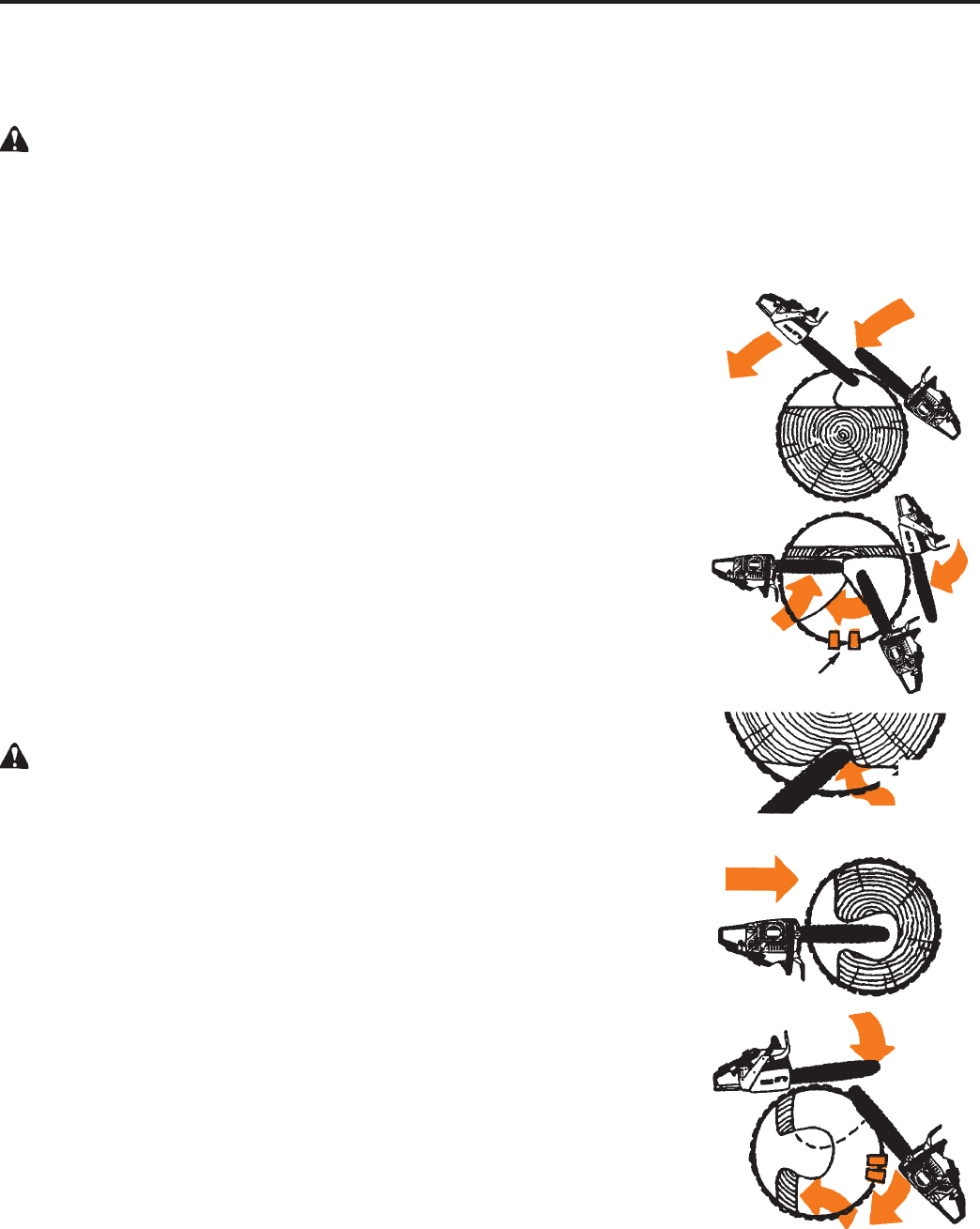
31
FELLING VERY LARGE TREES
Pertains to gasoline-powered saws only. Small gas powered saws and electric powered saws should not be
used to fell very large trees. Only those that have been trained to cut very large trees should attempt these
techniques.
WARNING! Call a professional tree-felling service to handle jobs that are beyond your abilities and
knowledge. This includes large trees, trees that are near power lines, homes, buildings and public roads.
Timber of a diameter exceeding the length of the saw blade can be felled by using
one of the following methods. To fell a leaning tree, see “Felling Extreme Leaners”
below.
DRAW-ACROSS METHOD - Standard procedures are used here, except that the
cuts have to be extended from one side to the other when the blade doesn’t fit
across the trunk.
Start the lower cut of the notch by pivoting in from one corner to a depth of 1/3 trunk
diameter. Then reverse the saw direction, reinsert saw in cut, and draw it across to
the other corner. Complete the cut on that side. Do the same thing to make the
intersecting top cut. Be careful to keep your body out of the kickback path when
making this angled top cut. Remove the cut wood wedge.
For the back cut, start at the corner at least 2 inches (51 mm) above the intersection
of the notch. Plan to leave 10 to 12 percent of the trunk diameter uncut as a hinge.
Pivot the saw from the back towards the hinge. Reverse saw direction, reinsert
saw into the cut, and draw it across the back of the tree. Cut the other side to
complete the felling cut and the hinge. Follow standard felling procedures from this
point.
PLUNGE CUTTING METHOD - This method uses the same steps for notching
and felling cuts as described in the “Draw-Across Method.”
WARNING! Plunge cutting entails boring inside the tree. Be aware that
there is always a chance of kickback even when the plunge cut is expertly done.
After notching the trunk, stand at the left and aim the saw at the middle of the notch
intersection. Throttle up to a slow chain speed. Make contact at the middle with the
bottom edge of the bar, NOT THE BAR NOSE!
Pivot the saw in to a depth of at least 6 inches (15 cm) before smoothly increasing
speed to full throttle. Then gradually shift cutting angle and pressure to bore straight
into the trunk. When all the way inside, hollow out the trunk. But do not cut away
any more of the hinge wood than necessary. Now make the back cut to fell the
tree.
FELLING EXTREME “LEANERS” - Do not assume that the lean makes notching
for directional control unnecessary. The notch is needed, but should not be as
deep as the standard 1/3 diameter notch. Before back cutting, make some notches
through the sapwood on both sides of the trunk to relieve some of the stress, which
causes splitting. Stay on the alert for possible splitting, because a splitting tree is
dangerous.
DRAW-ACROSS METHOD
NOTCHING
CUTS
WEDGES
FELLING CUTS
2
3
4
5
1
START OF
PLUNGE CUT
OR BORE
COMPLETION OF BORE
1
FELLING CUTS
2
3
4



